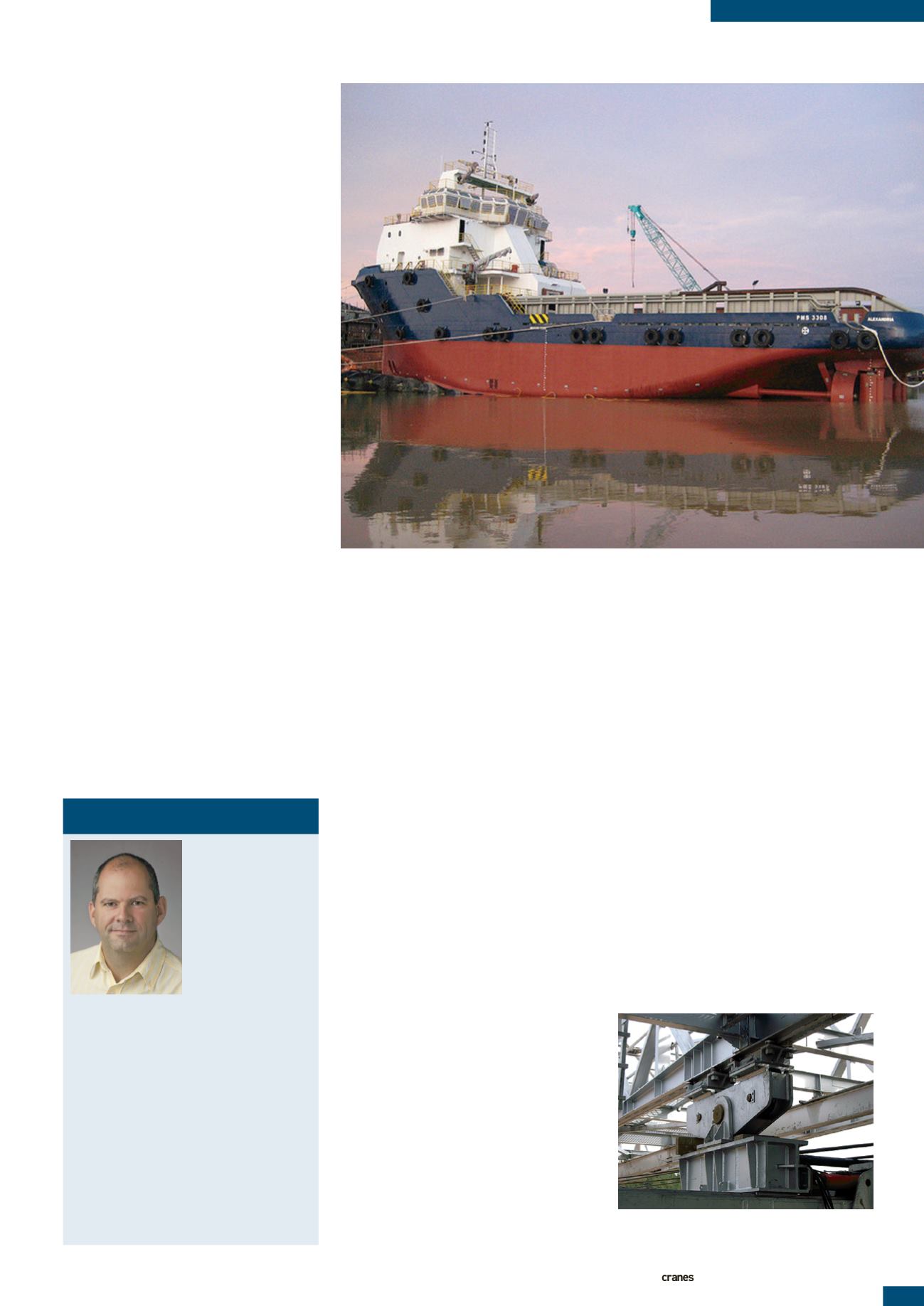
INTERNATIONAL AND SPECIALIZED TRANSPORT
■
OCTOBER 2013
THE KNOWLEDGE
41
Alternative ways
As a logical sequel to
the last two articles on
transport and crane
basics this month’s
feature, the fourth in
the series, covers
alternative moving
and lifting techniques.
MARCO VAN DAAL
explains some options
ABOUT THE AUTHOR
Marco van Daal has
been in the heavy
lift and transport
industry since
1993. He started at
Mammoet Transport
from the Netherlands
and later with Fagioli
PSC from Italy,
both esteemed companies and leading
authorities in the industry. His 20-year
plus experience extends to five continents
and more than 55 countries. It resulted
in a book The Art of Heavy Transport,
available at:
of-heavy-transport/
Van Daal has a real passion for sharing
knowledge and experience – the primary
reason for the seminars that he frequently
holds around the world. He lives in
Aruba, in the Dutch Caribbean, with his
wife and daughters.
continue rolling on.
One of the challenges was, and even
still in today’s rolling applications, is the
starting, stopping and steering of the load.
It requires a certain force to start rolling,
and once the load rolls it is important to
keep it rolling. For the steering, one would
have to stop the rolling motion, change
the angle of the logs and start rolling
again, all on an inclined surface. To turn
the corner, it is believed that sand was
spread out over a level area then the block
was skidded over it with brute force.
Fast forward
Two moving techniques that are
frequently applied in our industry today
find their roots in the pyramid building
>
C
ranes and modular transporters are
considered conventional tools for
the job but, where they cannot meet
all challenges, an alternative is needed. In
cases where there is a limited footprint,
height restriction or other physical site
constraints, the question, “What if a crane
or transporter cannot be used?” may
arise. The pyramids in Egypt, for
example, would not exist without the
development of alternative lifting and
moving techniques.
This is a good starting point. The
average pyramid consists of 2.5 million
limestone and granite blocks, each
weighing 2.5 tonnes each. More than
6 million tonnes of material has to be
mobilised to build a large pyramid,
sometimes from as far as 800 km
away. Even with today’s equipment
and technology, these are mind
boggling numbers.
There are a few different theories on
how the pyramids were constructed but
they all involve the rolling of each block
via an inclined slope to the final elevation
and destination. The rolling is believed
to have been carried out on logs with
many people pulling on the ropes. The
logs coming out at the rear end have to
be picked up and carried to the front end
where they are lined up for the block to
Launching a ship using
pneumatic rubber rollers
Tank rollers to reduce friction in
heavy shift applications


